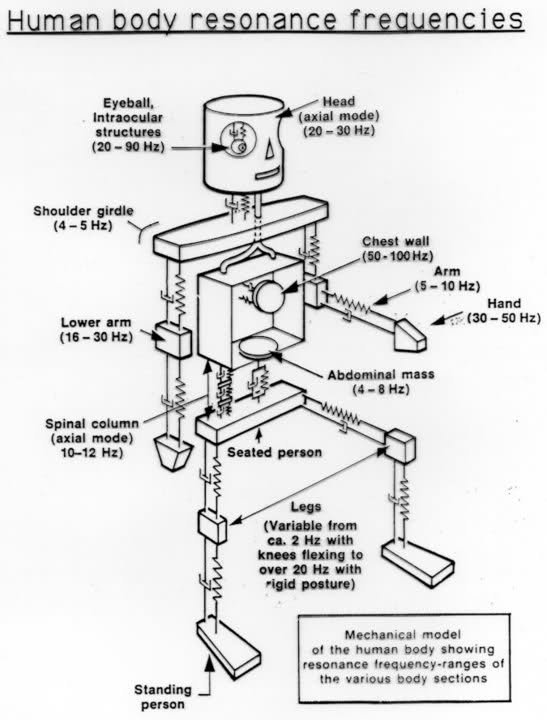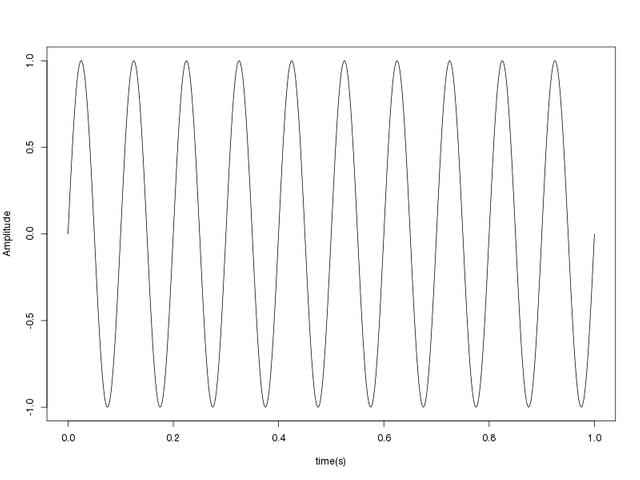Xinta's music lessons - Lesson 1
In these lessons I'll dump almost everything I know about music, not from the perspective of a “consumer” but of a hobbyist “producer”. I'll start with basic knowledge, then notation (the “classical” one), then I'll talk a little bit about harmony, and a little bit less about counterpoint. I am a self-taught guy, not a musician, having studied all alone these matters on a couple of books, many years ago. Professionals' criticisms and readers' comments are more than welcome. Nonetheless keep in mind that I am going to simplify many things for practicality's and brevity's sake.
What is sound?
Sound is both a physical and psychological phenomenon. It happens when there's a medium that “vibrates” transmitting these vibrations to our ears. We live in air, so the medium that “transports” the sound in our common experience is the air; but other gasses and liquids work too, even if they vibrate in a different way and therefore the sound we'll be perceived differently. If this medium is absent, we can't hear sounds — like in space.
Something caused the medium to vibrate: e.g. we hit a metal bar with a stick. Things may vibrate, but they do not vibrate at random: it depends on materials and shapes… So, each thing has a sort of personal “vibrating code”. Things vibrate and the surrounding medium follows, so to speak, but not instantly. In fact this medium is made of molecules to which the inertia principle applies. The air (its molecules) is pushed and pulled by the vibrating things, so that the vibrations cause air to be compressed: the sound that travels through the air is made of pressure waves.
The pressure increases (and decreases) in the direction of propagation of the sound. If you imagine the waves in a pond when you throw a stone, you would be right about some property, because they are waves as well, but you must imagine that the height of the wave represents the measure of the pressure between two parallel surfaces of a thin foils of air. Said otherwise, the oscillations happen longitudinally, not vertically.
If you stay put in a point near enough to the bar and measure the pressure, you will see your gauge pointer oscillating in time. For a short sound which dampens quickly you could see something like this (slowed down so that you can see it…):

(The browser might play it in loop… then imagine there's a “train” of such short sounds.)
If you rapresent the values of the pressure read on the instrument as points on a cartesian plane, one after another going from left to right, i.e. in chronological order as you see them (time goes from left to right), you have a graphical rapresentation of the pressure wave, namely of the sound.
Let's summarize and add a detail before going on:
- sound is made of waves of pressure;
- sound (pressure waves) propagates at a finite speed (this speed depends on certain physical properties of the medium);
- its energy diminishes — that is, if you put yourelf far enough, you won't hear the sound; big explotions can be heard from far far away, and if you are near enough, but not too much to be killed, you will feel the very windy essence of the sound of the dire rumble.
If you go clubbing, try to stay near a subwoofer pumping out its sounds. You could feel the air moving (but care your ears…). Low-pitched sounds have low frequency, i.e. longer wavelength. This means the pressure wave moves “slow” and you whole are in the middle of the space interested by the compression. Moreover, the low frequencies could be near your chest resonance frequencies (50-100 Hz).

I've said before that each thing has its own way of vibrating — it exists a special preferred frequency at which they vibrate “better”. You'll find that it's easy to make a thing vibrate at this special frequency, e.g. we could hit the bar repeatedly (though likely we need to be Flash Gordon). This is a cheap explanation of the resonance. Think about a swing: if you find the right “frequency”, you can make it swing higher and higher, otherwise you won't succeed.
This is the physical nature of a sound.
Our ears are mechanical sensors, and sensors usually do one thing: they “convert” a kind of signal (mechanical, in this case: we've a pressure wave) into another kind of signal (electrical). This is how sound enters our brain. Yet, it is not over, since the final feeling is not the direct result of a simple isolated electrical phenomenon inside a brain. But here we stop saying just this: the sound is felt by our “mind” (or maybe psyche), and this accounts for the sound being a psychological phenomenon, too.
There's the very interesting psycoacoustics; likely many rules about harmony could be explained using it.
So, sounds are made of pressure waves, and waves propagate through a medium in a way which depends on the medium. These pressure waves reach our ears (which are a very complex measuring instruments with specific features), and are converted into electrical signals that our brain is able to process in a very powerful way. Our auditory apparatus is able to “decompose” complex sounds — so we can distinguish a nightingale singing in a shop where several people talk. We could even distinguish the voice of our friend among several voices. We can also distinguish the sound of a oboe playing unison (the same notes) with a clarinet.
Here's a wave.
If we register the pressure and plot it as the time passes (as described above), we obtain something like this:

Basically, by recording how the pressure change in time, we are recording a sound! Then, if I have an instrument which follows those “moves” and “imitates” them, making the air move (and be compressed) accordingly, I am reproducing the recorded sound!
Since your measures can't be infinite in a finite time, you must choose how many measures you do in a second. This is called your sampling frequency. I won't treat this argument, but I am sure you're familiar with the 44100 Hz. This is the sampling frequency: this number says that in a single second there are 44100 sample (a sample says the value of our pressure in some way I won't explain better). Hz is read “Hertz” and is the unit you measure frequencies with. If something happens with a frequency of 100 Hz, it means that it happens 100 times in a second.
What does it mean when we say that a sound has a frequency of 100 Hz?
If you look at the complex sound above, it is hard to tell. Let's use a very simpler sound, made of a simple wave, the most basic and simple wave, the sinusoid.

How many crests, when the wave reaches a maximum, can you count? There are 10 crests (and 10 troughs). The time interval is 1 second. So the frequency of this wave is 10 Hz: 10 complete oscillations (cycles) in a second. A cyclic or periodic phenomenon is the one that after one cycle or period, repeats itself.
An important fact
Now, how can we treat more complex sounds? Vibrations aren't all sinusoids! If it were so, we couldn't hear all the beauty of music.
An important knowledge, mathematically provable, is this: every periodic function can be “decomposed” as a sum of sine waves of different frequencies and amplitudes. The Fourier theorem states so, and such a sum is the Fourier series. This means that it doesn't matter how complex our speech example above is: in theory I can write it as a sum of simple sine waves. (What a pity such a sum has an infinite number of terms… and that we must someway make our sound periodic, and sometimes it's not exactly what we have. Nonetheless we can use less than an infinite number of terms and the sum would resemble the original sound closely enough.)
Sounds we hear are made of several sinusoids of different frequencies and each has its intensity (amplitude) greater or smaller with respect to another. These sinusoids form a sort of recipe of that sound, giving to it its features, its timbre. So, a clarinet playing a note sounds different from a flute playing the same notes obviously because the pressure waves are different, and if we decompose those sounds and we compare it, we discover that their recipe is different. We also see that our perception of the pitch of that note is fixed by one specific element of this recipe, corresponding to a specific sinusoid with its frequency. We call this special very important sinusoid fundamental, and the frequency we perceive as the pitch of the note is the fundamental frequency. The recipe is made of many frequencies, called harmonics when they are an integer multiple of the fundamental frequency. This happens for several musical instruments, but in general depends on how the vibrations are produced. In some instruments frequencies could be a little bit off the exact multiple frequency; this is inharmonicity, and it happens especially for those instruments that produce a sound in a percussive way, like, well, percussions, but also plucked strings (e.g. guitar, harp, violin's pizzicato) and “hammered” strings (piano).
All these details, this recipe, make a sound unique and recognizable.
Read the next lesson
Thank you very much for this read.
Followed and Resteemed.
Thanks for your appreciation!
This post has been ranked within the top 25 most undervalued posts in the second half of Apr 06. We estimate that this post is undervalued by $0.61 as compared to a scenario in which every voter had an equal say.
See the full rankings and details in The Daily Tribune: Apr 06 - Part II. You can also read about some of our methodology, data analysis and technical details in our initial post.
If you are the author and would prefer not to receive these comments, simply reply "Stop" to this comment.